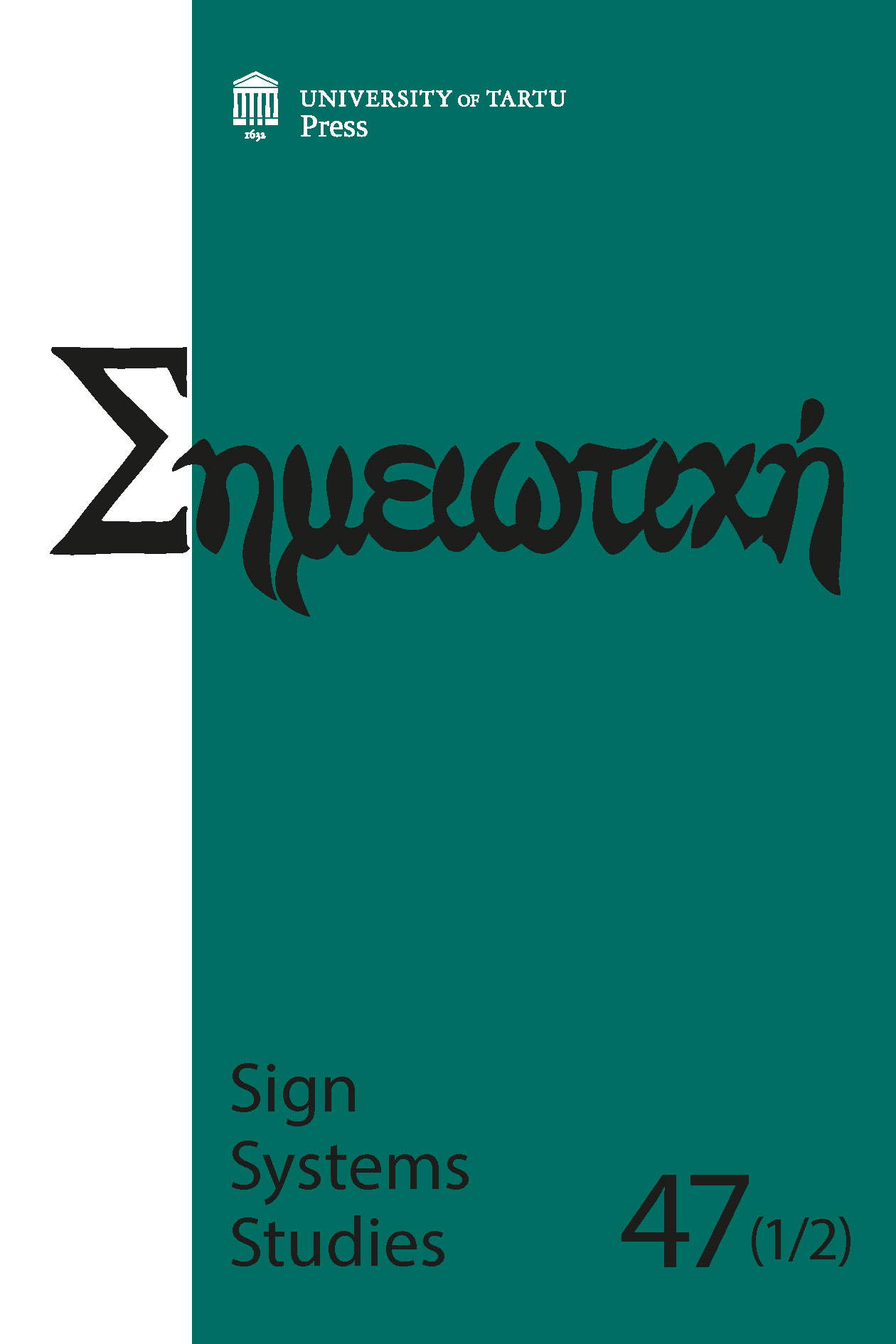Steps towards the natural meronomy and taxonomy of semiosis: Emon between index and symbol?
DOI:
https://doi.org/10.12697/SSS.2019.47.1-2.03Keywords:
icon, imitation, imprinting, mereology, natural classification, sign development, sign evolution, sign types, sign typology, social learningAbstract
The main aim of this brief and purposely radical essay is to investigate further possibilities for empirical research in natural classification of semiosis (signs as wholes). Before introducing emon – a missing term in the taxonomy of signs – we make a distinction between the natural and artificial, and between the taxonomic and meronomic classifications of signs. Natural classifications or typologies are empirically based, while artificial classifications do not require empirical test. Meronomy describes the relational or functional structure of the whole (for instance triadic, circular, etc. composition of sign), while taxonomy categorizes individuals (individual signs). We argue that a natural taxonomy of signs can be based on the existence of different complexity of operations during semiosis, which implies different mechanisms of learning. We add into the taxonomy a particular type of signs – emonic signs, which are at work in imitation and social learning, while being more complex than indexes and less complex than symbols. Icons are related to imprinting, indexes to conditioning, emons to imitating, and symbols to conventions or naming. We also argue that the semiotic typologies could undergo large changes after the discovery of the proper mechanisms or workings of semiosis.Downloads
Download data is not yet available.
Downloads
Published
2019-08-08 — Updated on 2024-01-10
How to Cite
Kull, K. (2024). Steps towards the natural meronomy and taxonomy of semiosis: Emon between index and symbol?. Sign Systems Studies, 47(1/2), 88–104. https://doi.org/10.12697/SSS.2019.47.1-2.03
Issue
Section
Articles
License
Copyright (c) 2019 Sign Systems Studies

This work is licensed under a Creative Commons Attribution-NonCommercial-NoDerivatives 4.0 International License.


